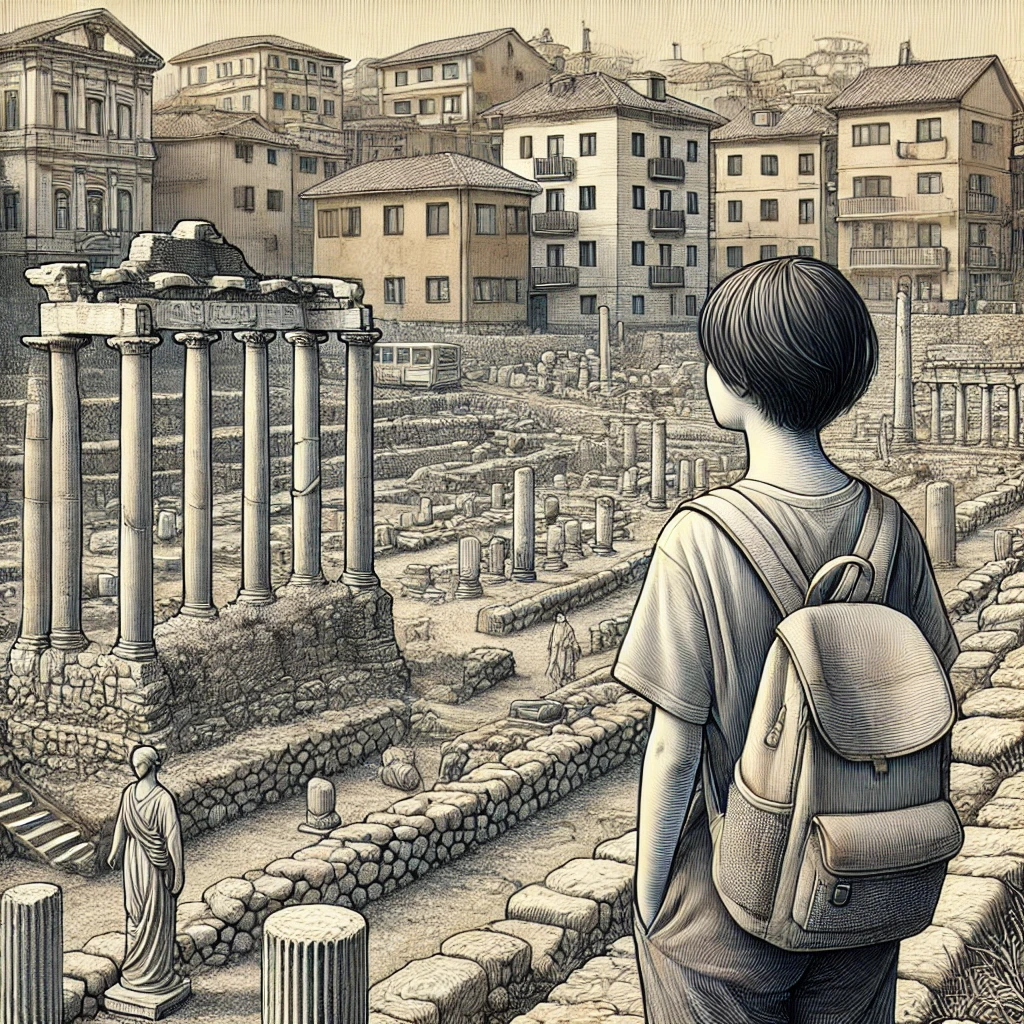ChatGPT:
Thessaloniki, the second-largest city in Greece, is a vibrant and historic port city located in the northern part of the country, along the Thermaic Gulf of the Aegean Sea. Known as a cultural and economic hub, Thessaloniki boasts a rich history that spans over 2,300 years, with influences from various civilizations, including the Greeks, Romans, Byzantines, and Ottomans.
Historical Significance
Thessaloniki is often referred to as the “co-capital” of Greece due to its historical and cultural importance. It was founded in 315 BCE by King Cassander of Macedon and named after his wife, Thessalonike, the sister of Alexander the Great. Throughout its history, the city has been a key trade and cultural center, particularly during the Byzantine Empire when it served as a significant administrative and military hub. The city’s rich history is evident in its numerous ancient monuments, Byzantine churches, and Ottoman structures.
Thessaloniki is often considered Greece’s cultural capital. The city hosts a variety of festivals and events throughout the year, including the Thessaloniki International Film Festival and the Dimitria Festival. The city’s diverse population contributes to its rich cultural tapestry, with influences from the Balkans, the Middle East, and beyond.
Modern Thessaloniki
Today, Thessaloniki is a bustling, cosmopolitan city known for its vibrant urban life, excellent cuisine, and relaxed atmosphere. The city’s waterfront promenade, the Nea Paralia, is a popular spot for both locals and visitors to take a stroll, enjoy the sea breeze, and watch the sunset.
Overall, Thessaloniki offers a unique blend of history, culture, and modern living, making it a must-visit destination in Greece.
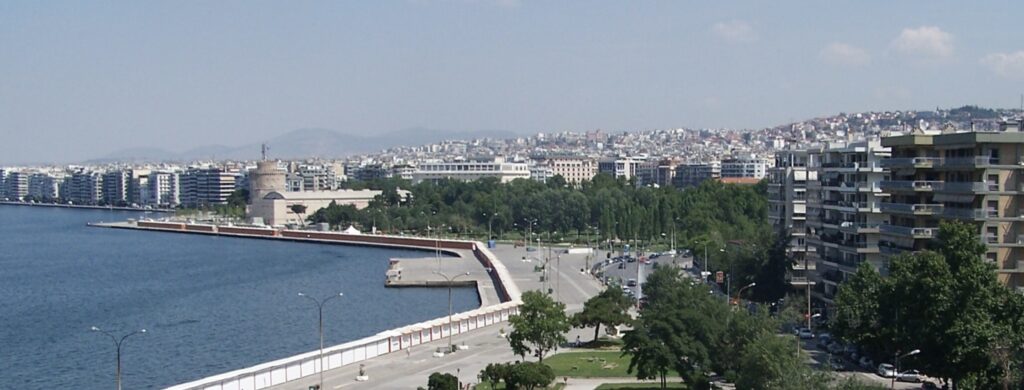
Thessaloniki, one of Greece’s most significant cities, has a rich and multifaceted history that spans over two millennia. Its origin, development, and historical significance are deeply intertwined with the broader history of Greece and the surrounding regions.
Foundation and Ancient History
Thessaloniki was founded in 315 BCE by Cassander, the king of Macedon, who named the city after his wife, Thessalonike. Thessalonike was the half-sister of Alexander the Great and the daughter of King Philip II of Macedon. The city was strategically located at the crossroads of major trade routes, including the Via Egnatia, which connected the Adriatic Sea to Byzantium (modern-day Istanbul). This strategic position helped Thessaloniki grow rapidly into a major commercial and military hub.
Under Macedonian rule, Thessaloniki became an important city in the Hellenistic period. It continued to flourish under Roman rule after Macedonia was annexed by the Roman Republic in 168 BCE. The city’s importance grew as it became the capital of the Roman province of Macedonia, a position that contributed to its wealth and significance in the region.
Roman Period
During the Roman Empire, Thessaloniki’s strategic location made it a key city in the empire’s administration of the Balkans. It was granted the status of a free city in 42 BCE, allowing it to self-govern and continue to grow economically. Thessaloniki’s prosperity during this period is evident in the grand public works commissioned by the Romans, including the construction of an expansive forum, a triumphal arch (the Arch of Galerius), and the Rotunda, which was initially intended as a mausoleum for Emperor Galerius.
The city’s early Christian community played a crucial role in the spread of Christianity. The Apostle Paul visited Thessaloniki around 50 CE during his second missionary journey and preached in the city’s Jewish synagogue. His letters to the Thessalonians are some of the earliest Christian texts in the New Testament.
Byzantine Era
Thessaloniki became one of the most important cities of the Byzantine Empire after the division of the Roman Empire in 395 CE. It was the empire’s second-largest city after Constantinople (modern-day Istanbul) and served as a major military, administrative, and cultural center. The city’s walls were fortified to protect against invasions, and many churches were built during this period, including the Church of Hagia Sophia and the Church of Saint Demetrios, dedicated to the city’s patron saint.
Throughout the Byzantine period, Thessaloniki was a focal point for art, culture, and religion. The city’s intellectual and artistic life flourished, making it a center for Byzantine art and learning. It was also during this time that Thessaloniki became a target for invasions, including by the Slavs in the 6th and 7th centuries, and later by the Saracens and Normans.
Ottoman Period
In 1430, after a prolonged period of decline and instability, Thessaloniki fell to the Ottoman Turks. The city remained under Ottoman rule for nearly five centuries, which significantly influenced its architecture, culture, and demographics. During this period, Thessaloniki was an important administrative and economic center within the Ottoman Empire.
Under Ottoman rule, the city’s population became more diverse, with significant communities of Jews, Greeks, and Muslims. Thessaloniki was particularly known for its large and prosperous Jewish community, which became one of the largest in the world after the expulsion of Jews from Spain in 1492. The Jewish community played a key role in the city’s commercial life.
Modern Era and Greek Independence
Thessaloniki was integrated into the Kingdom of Greece in 1912 during the Balkan Wars. This marked the beginning of a new chapter in the city’s history. The city was greatly affected by the Greco-Turkish War (1919-1922) and the subsequent population exchange between Greece and Turkey, which resulted in the departure of the city’s Muslim population and the arrival of Greek refugees from Asia Minor.
The early 20th century also saw significant events that shaped the modern city. In 1917, a devastating fire destroyed much of the historic center of Thessaloniki, leading to a major urban redevelopment project that gave the city its current layout. This reconstruction was influenced by modern European urban planning principles, transforming Thessaloniki into a more organized and cosmopolitan city.
World War II and Post-War Period
During World War II, Thessaloniki suffered under German occupation. The city’s large Jewish population was almost entirely exterminated during the Holocaust, with over 90% of its Jewish inhabitants being deported to concentration camps.
After the war, Thessaloniki underwent rapid urbanization and development. The city expanded, modernized its infrastructure, and became a major center for trade, industry, and education in northern Greece. Thessaloniki’s port played a crucial role in the city’s economic growth, serving as a gateway for trade between Greece and the Balkans.
Thessaloniki Today
Today, Thessaloniki is Greece’s second-largest city and a vibrant cultural and economic hub. It is known for its lively atmosphere, rich history, and diverse population. The city’s historical significance is evident in its well-preserved monuments from various periods, from ancient ruins to Byzantine churches and Ottoman-era buildings.
Thessaloniki remains a key player in the Balkans, serving as a bridge between Europe and the Middle East. It is also a major educational center, home to Aristotle University, the largest university in Greece, which contributes to its youthful and dynamic character. The city’s rich history, combined with its modern amenities and cultural scene, make Thessaloniki a unique and compelling destination in the Mediterranean region.

Thessaloniki is rich in historical monuments and tourist attractions that reflect its diverse cultural and historical heritage. Here’s a list of some of the most notable sites:
Ancient and Roman Monuments
- The White Tower: The city’s most iconic landmark, originally part of the defensive walls built by the Ottomans in the 15th century.
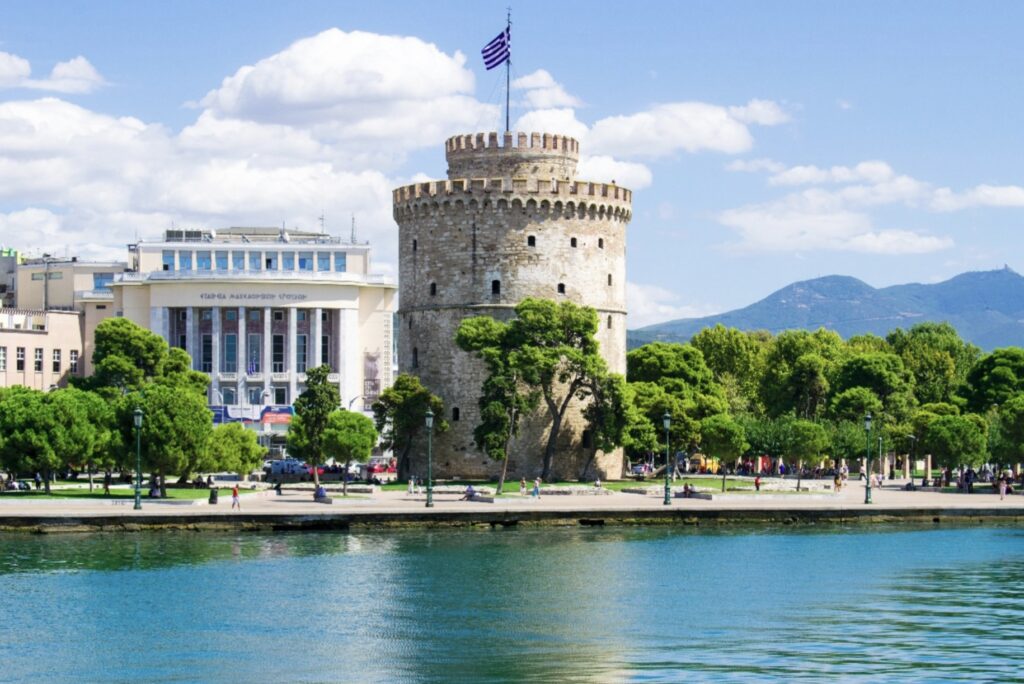
- Rotunda of Galerius: A massive round building initially intended as a mausoleum for Emperor Galerius, later converted into a church and then a mosque.
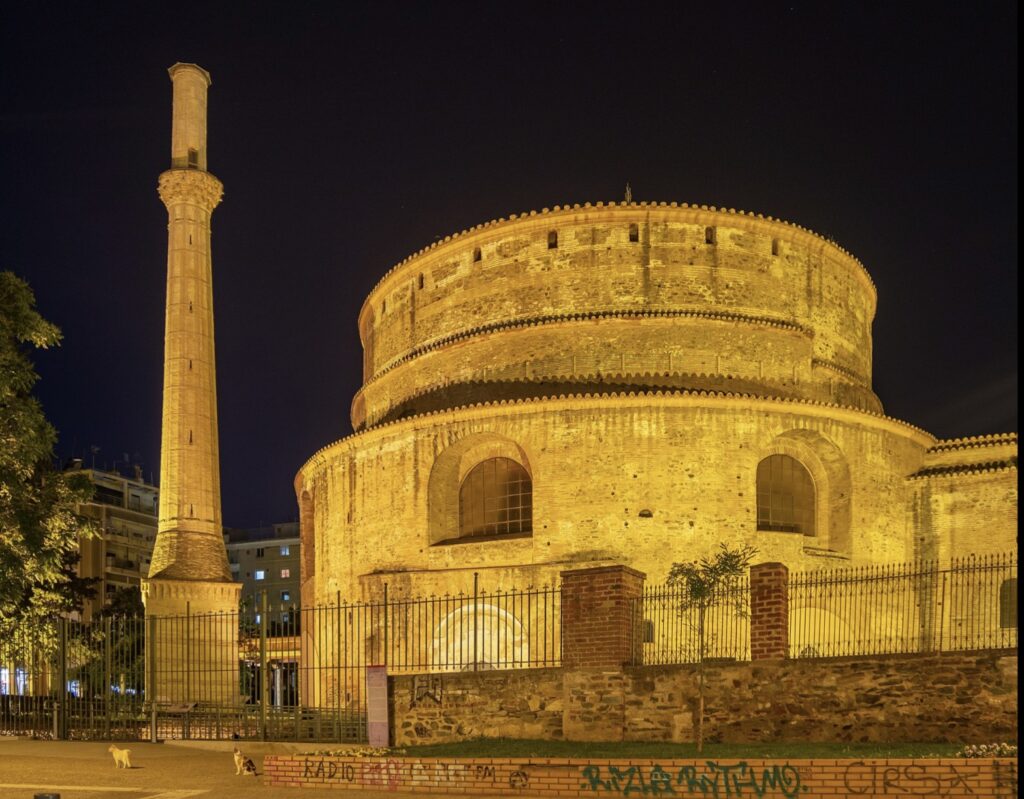
- Arch of Galerius (Kamara): Built to celebrate the victory of Emperor Galerius over the Persians in the early 4th century, this triumphal arch is decorated with detailed reliefs depicting the campaign.
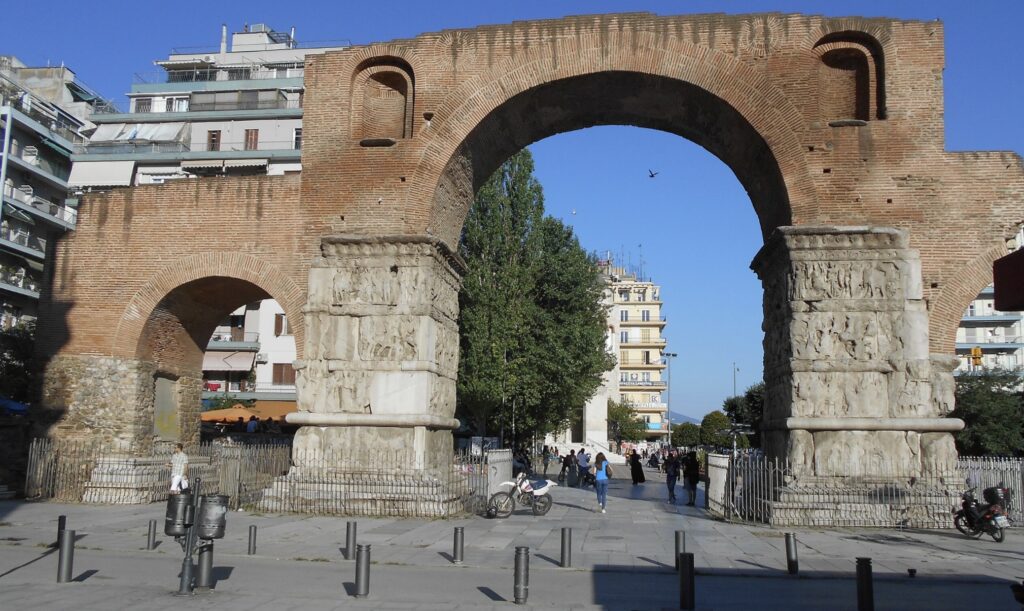
- Roman Forum (Agora): The ancient Roman market and social center of Thessaloniki, featuring remnants of public buildings, a small theater (Odeon), and a museum.
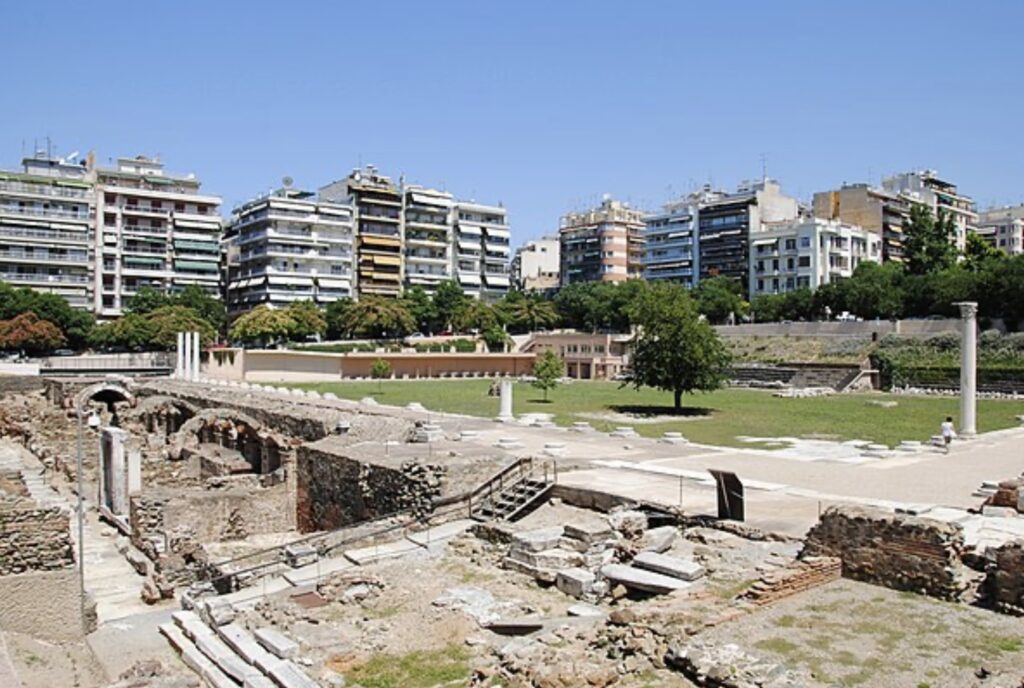
- Hippodrome: Though only parts of it remain, the Hippodrome was a major site for chariot racing and other events during the Roman period.
Byzantine Monuments
- Church of Hagia Sophia: One of the oldest churches in Thessaloniki, dating back to the 8th century, known for its impressive mosaics.
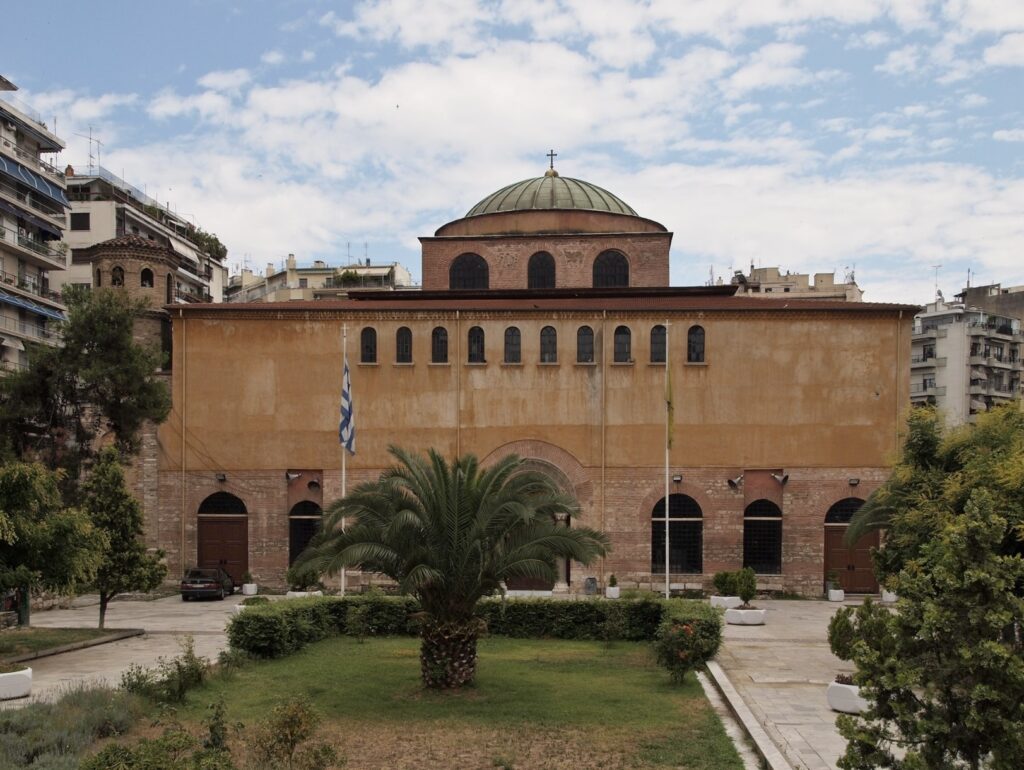
- Church of Saint Demetrios: The largest church in Greece, dedicated to the city’s patron saint, Saint Demetrios. The church is famous for its crypt and beautiful mosaics.
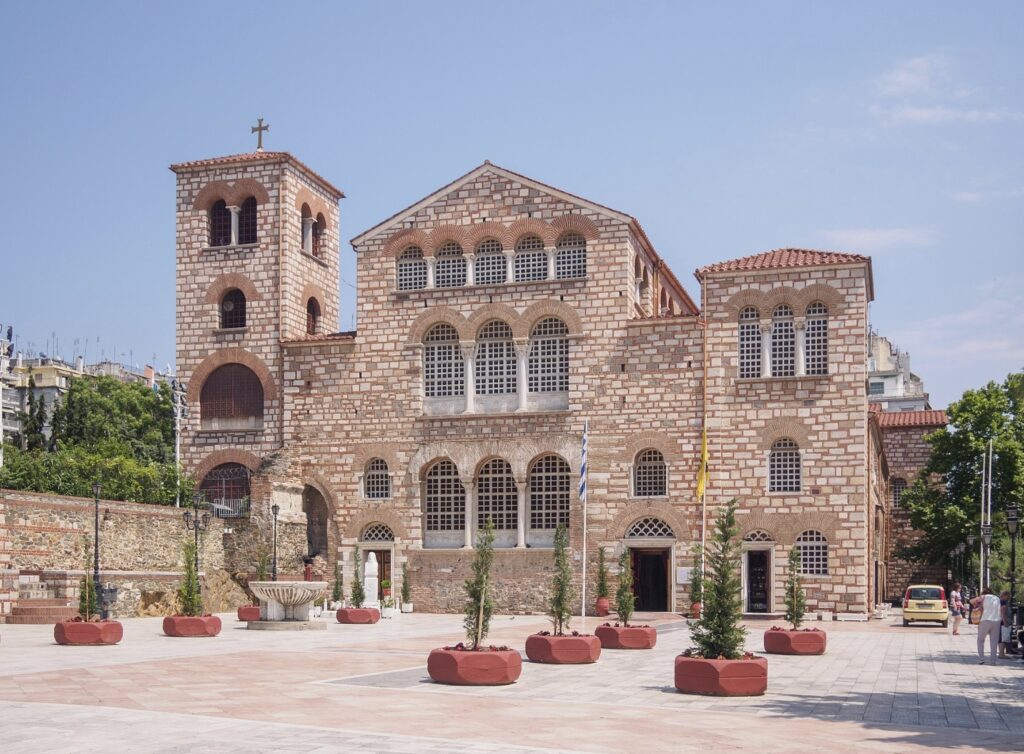
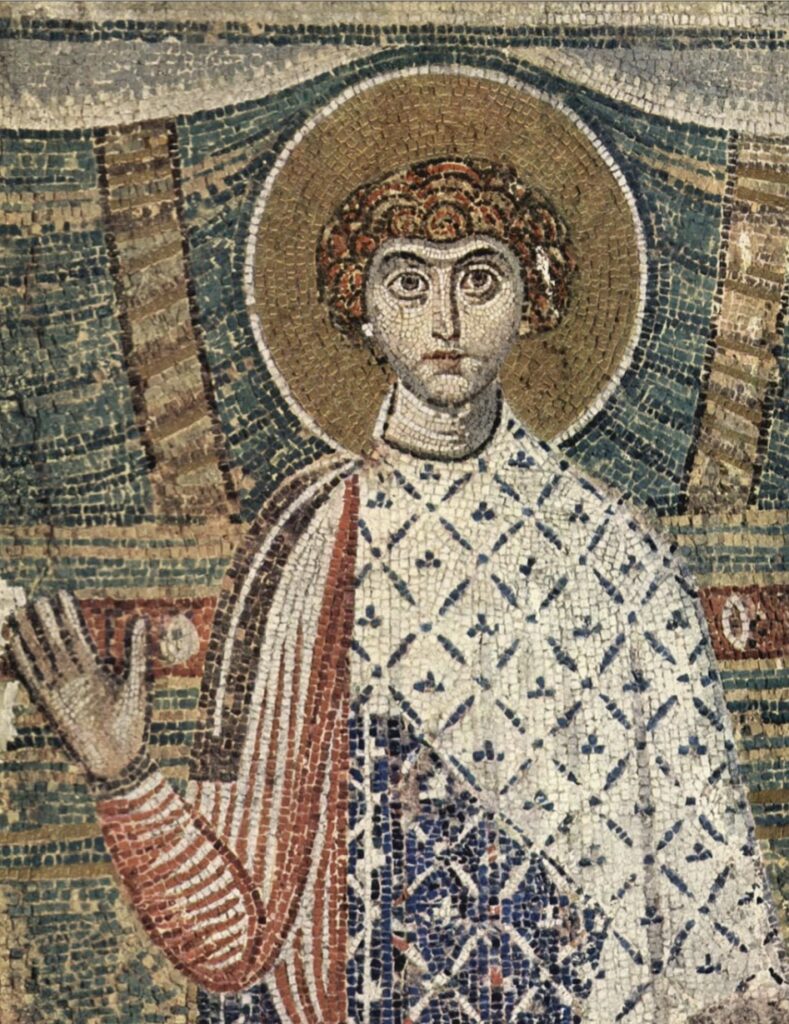
- Church of Panagia Chalkeon: A well-preserved 11th-century Byzantine church known as the “Red Church” because of its brick construction.
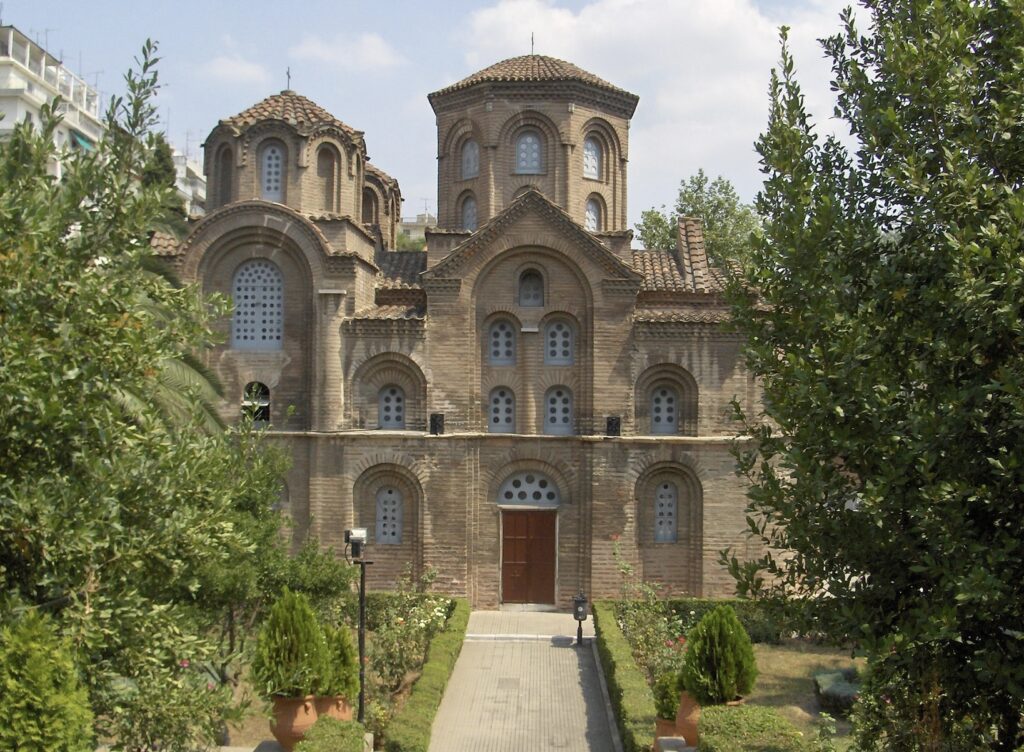
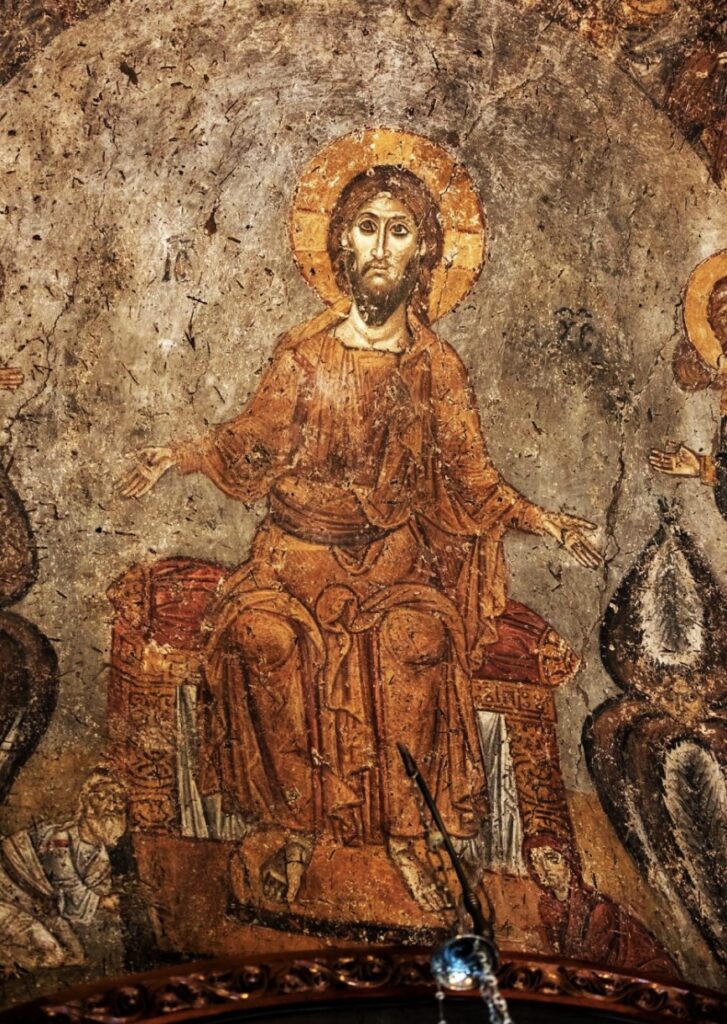
- Church of the Holy Apostles: A 14th-century church featuring stunning mosaics and frescoes, reflecting the late Byzantine style.
- The Byzantine Walls: The city’s defensive walls, which date back to the 4th century, with well-preserved sections offering views over the city. The Trigonion Tower and Heptapyrgion (Yedi Kule) fortress are notable parts of these walls.
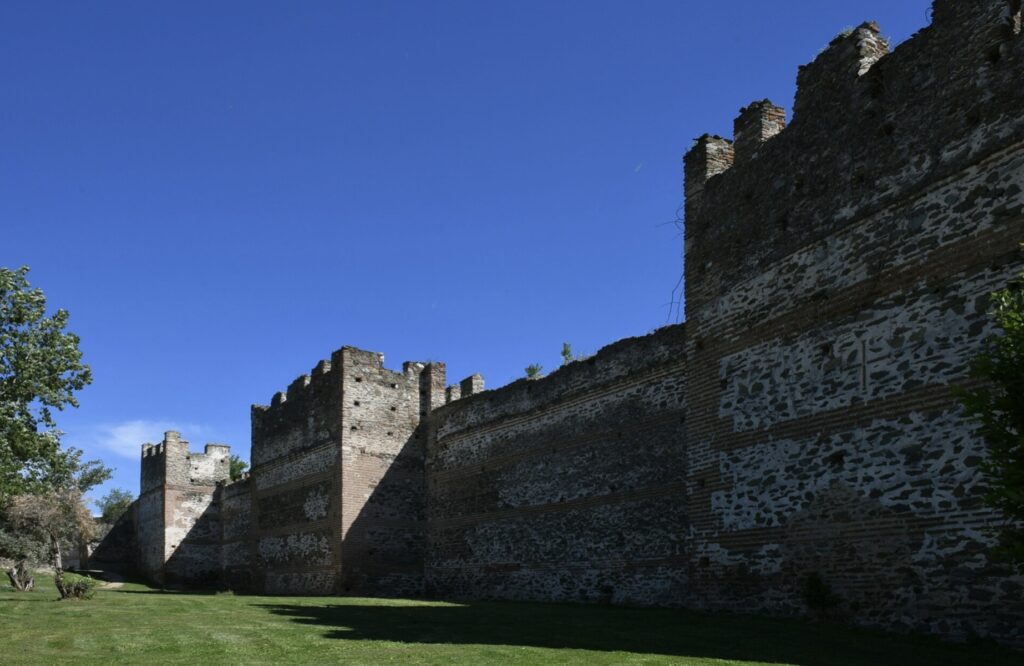
- Vlatadon Monastery: A 14th-century monastery offering panoramic views of Thessaloniki, and known for its historical significance and well-preserved Byzantine frescoes.
Ottoman Monuments
- Alaca Imaret: A 15th-century mosque, now used for exhibitions and cultural events.
- Bey Hamam: Also known as the “Baths of Paradise,” this 15th-century Ottoman bathhouse is one of the best-preserved in Greece.
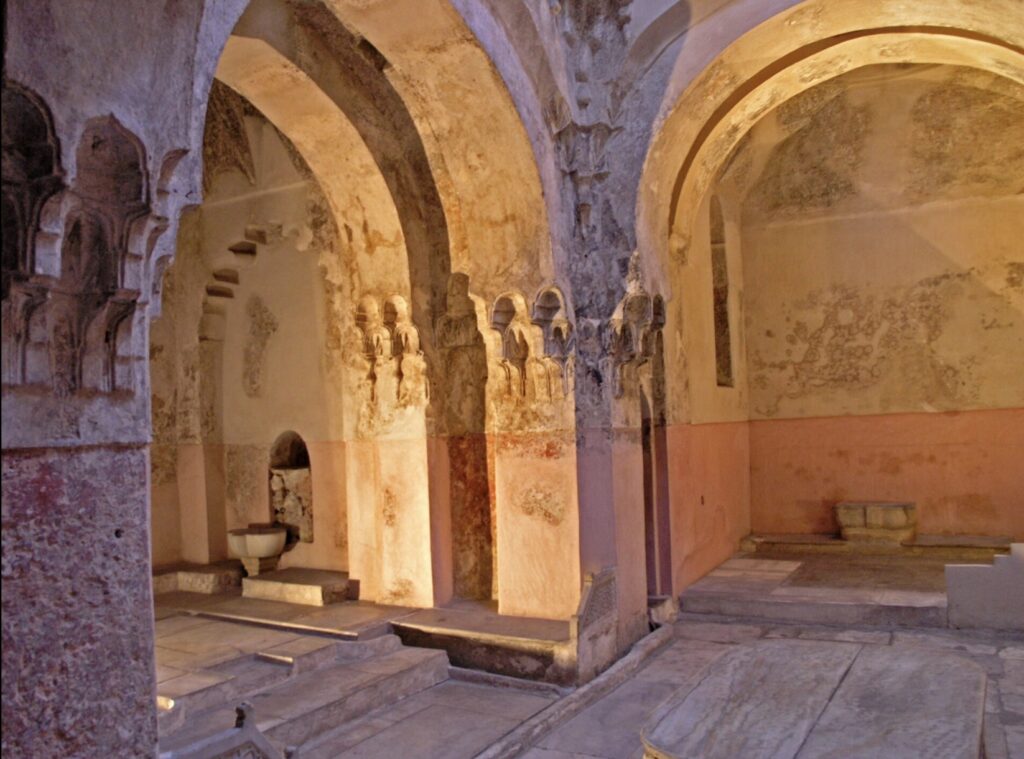
- Hamza Bey Mosque: Another significant Ottoman-era mosque, currently under restoration, which reflects the Islamic architecture of the time.
Jewish Heritage
- Jewish Museum of Thessaloniki: This museum documents the rich history of the Jewish community in Thessaloniki, which was one of the largest in Europe before World War II.
- Monastir Synagogue: One of the few remaining synagogues in the city, it serves as a reminder of the once-thriving Jewish community.
Modern and Cultural Attractions
- Archaeological Museum of Thessaloniki: Houses a vast collection of artifacts from ancient Macedonia, including sculptures, jewelry, and pottery.
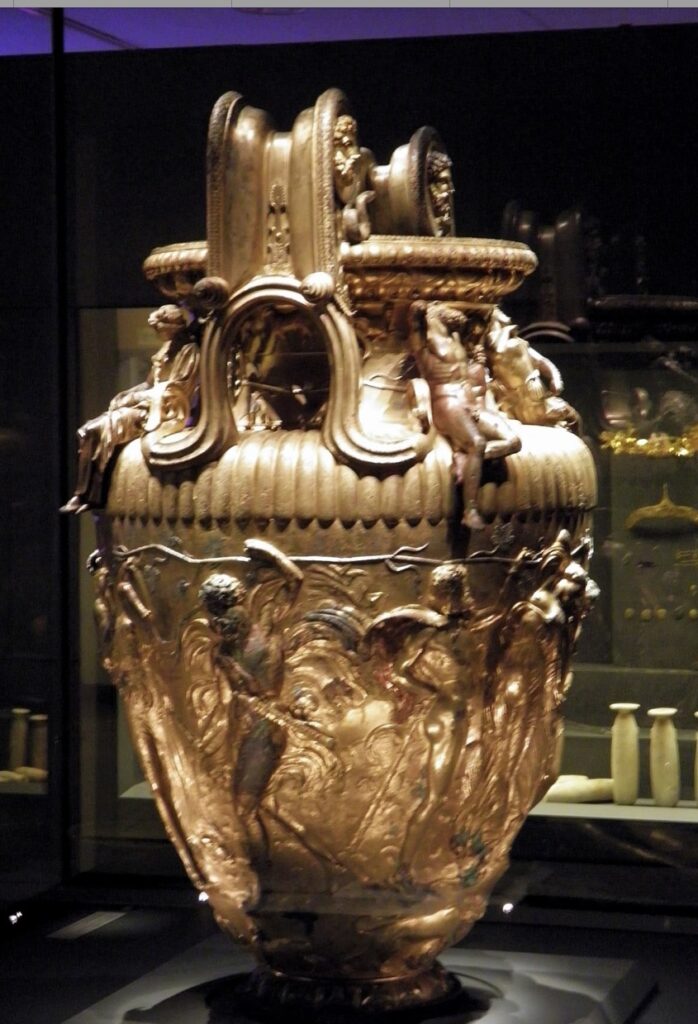

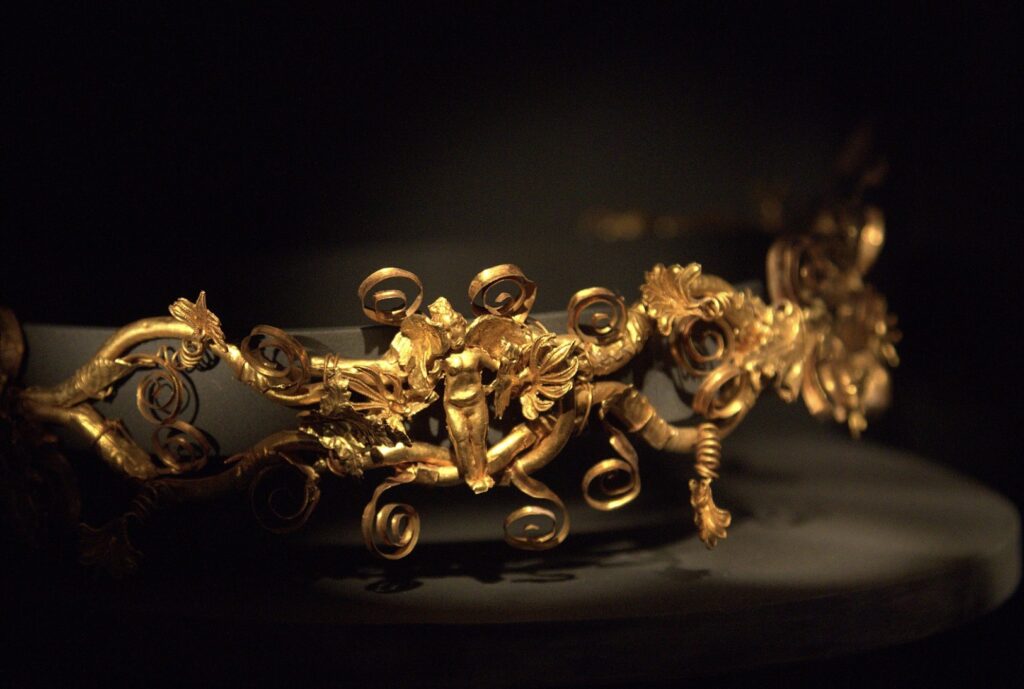
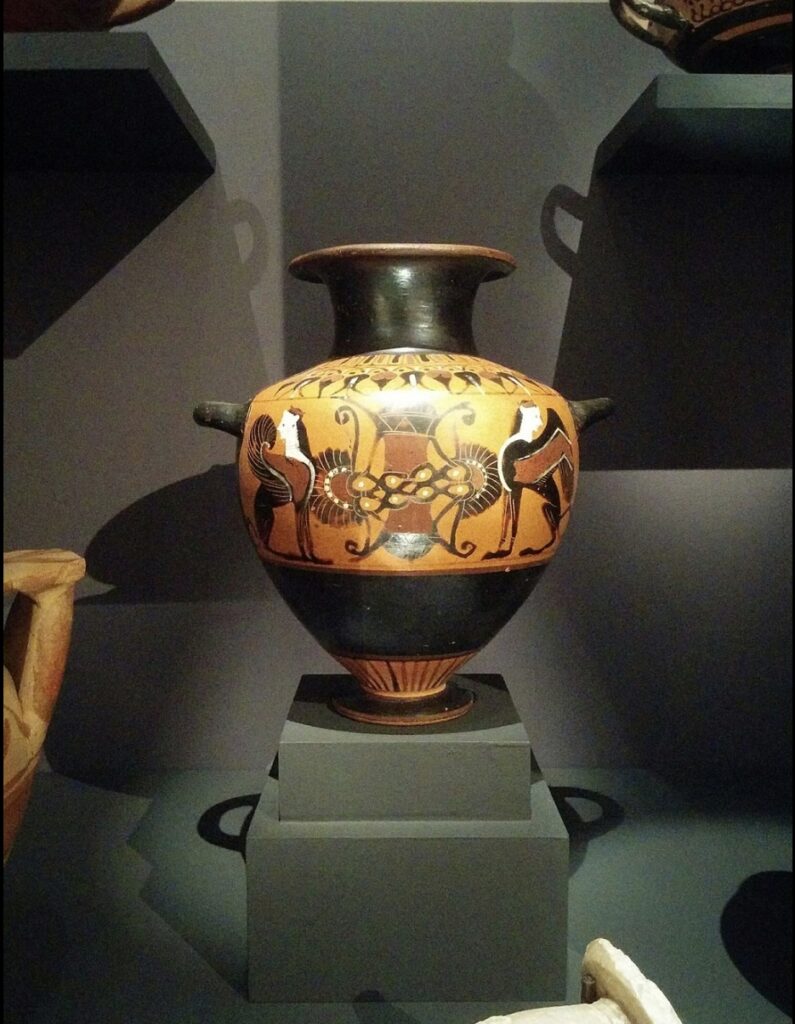
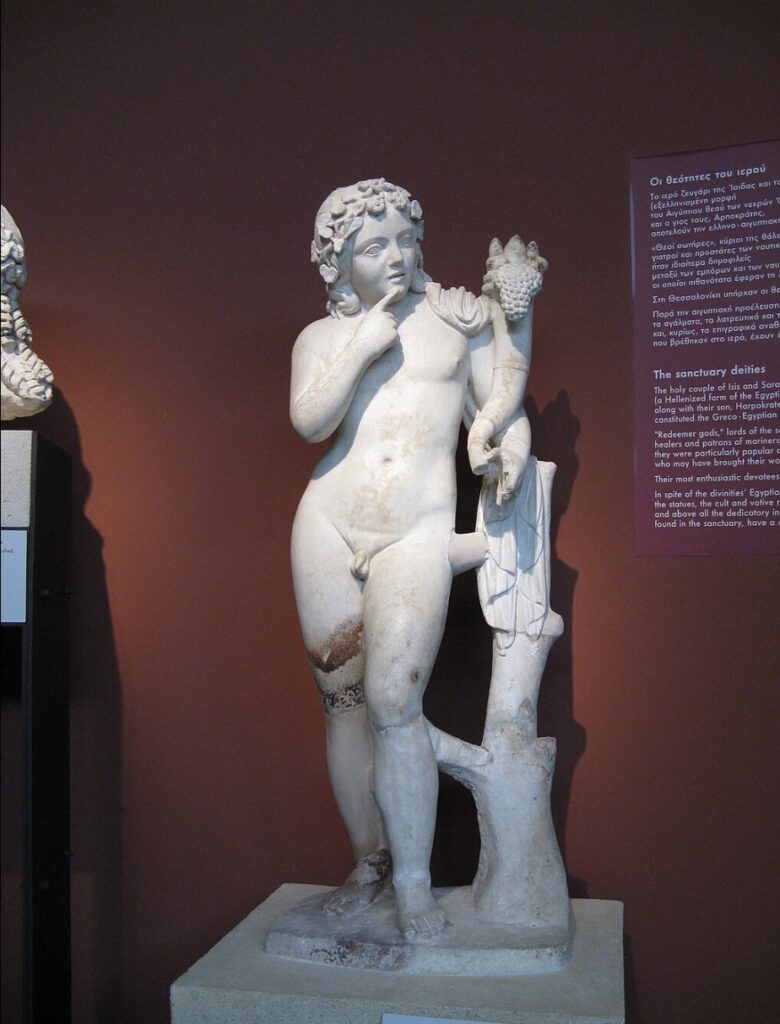
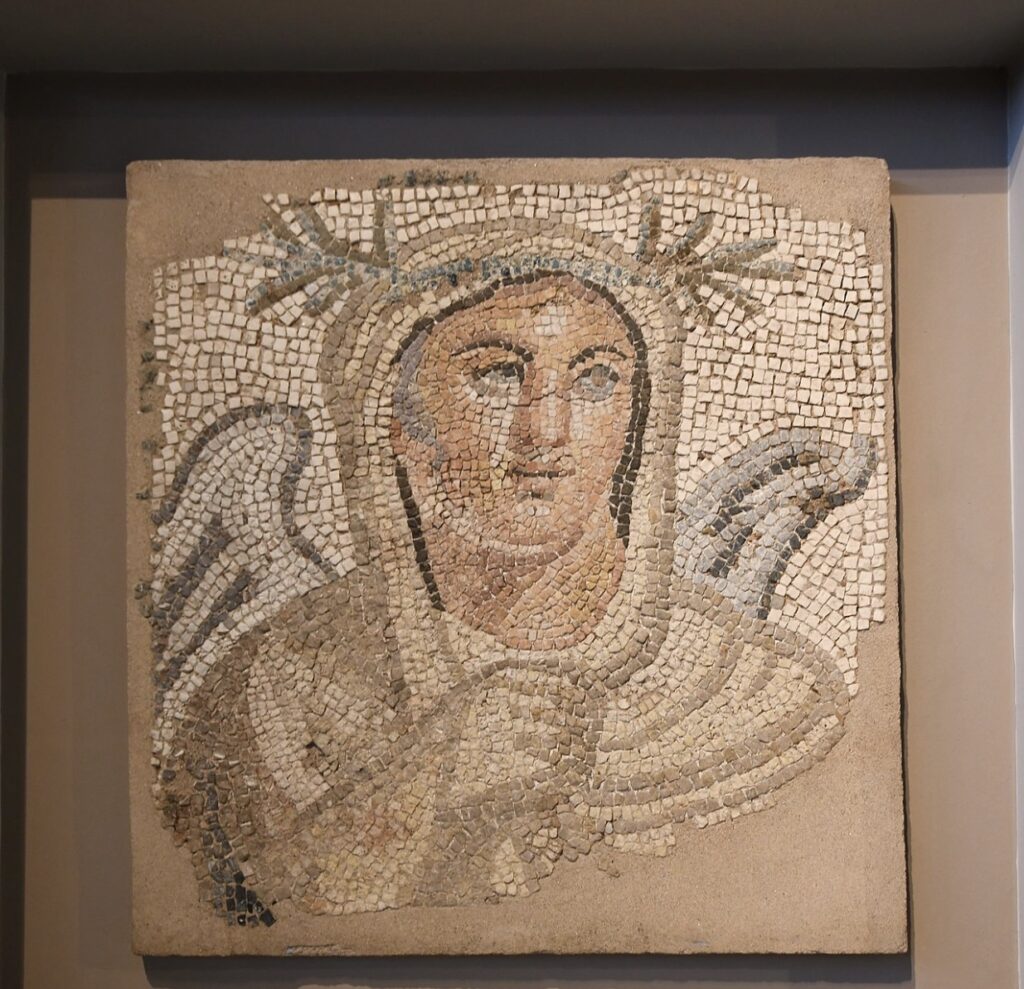
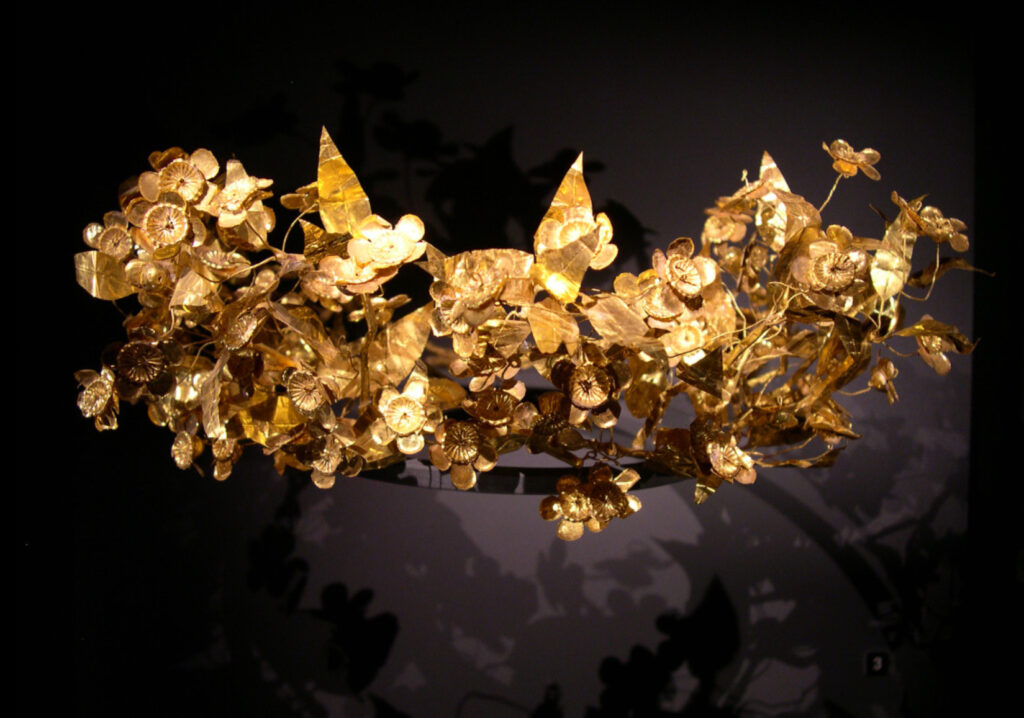
- Museum of Byzantine Culture: A museum dedicated to the Byzantine history and culture of Thessaloniki and Macedonia, showcasing artifacts, icons, and religious relics.
- Ataturk Museum: The birthplace of Mustafa Kemal Ataturk, the founder of modern Turkey, which has been preserved as a museum.
- Ladadika District: A vibrant neighborhood known for its nightlife, restaurants, and preserved 19th-century architecture.
- Modiano Market: A bustling covered market where visitors can experience local food and culture.
Natural and Scenic Attractions
- Nea Paralia (New Waterfront): A modern, extensive promenade along the coast, perfect for walking, cycling, and enjoying the sea views.
- Ano Poli (Upper Town): The old town of Thessaloniki, known for its traditional houses, narrow streets, and excellent views of the city and the sea.
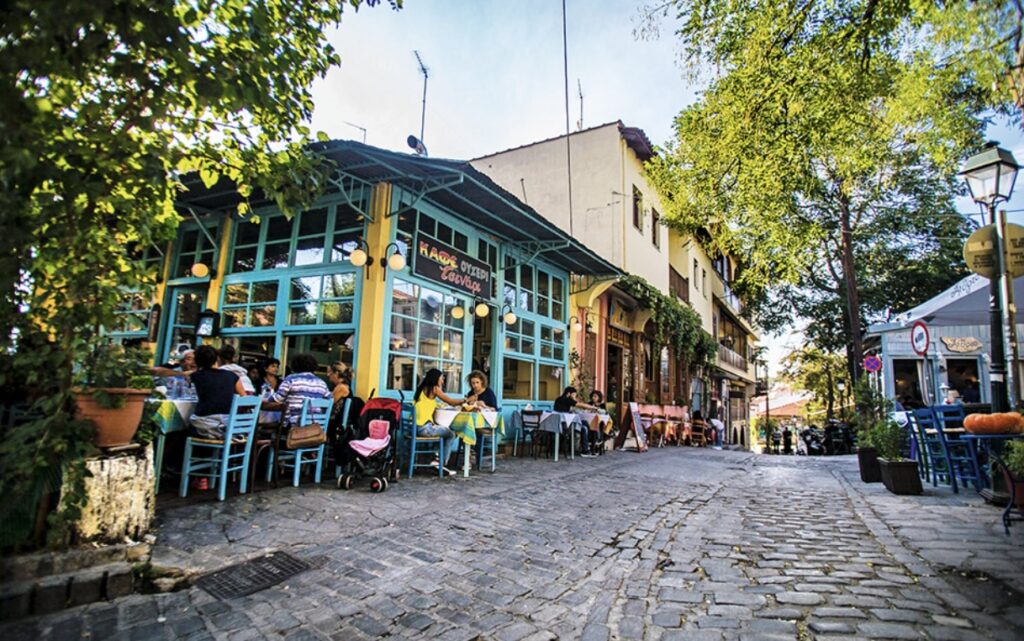
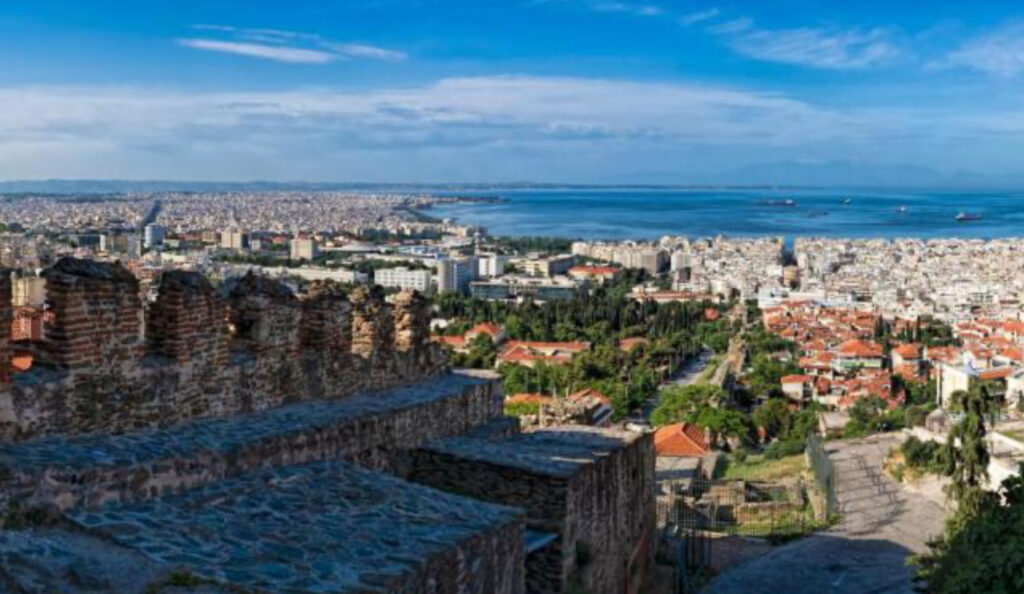
- Seih Sou Forest: A large urban forest on the hills overlooking the city, offering hiking trails and natural beauty.
- Thermaikos Gulf: The bay on which Thessaloniki is located, offering picturesque views, especially at sunset.
These attractions provide a glimpse into Thessaloniki’s layered history and vibrant culture, making the city a fascinating destination for visitors.
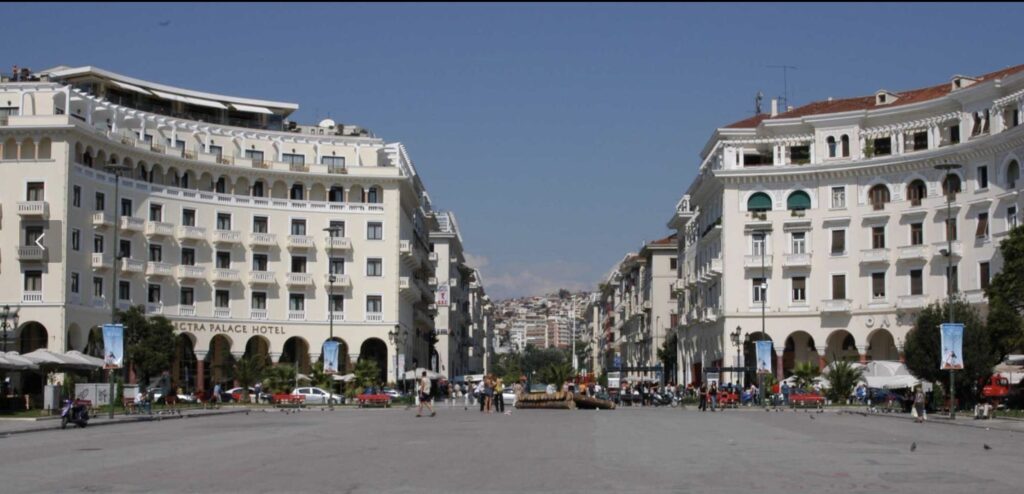
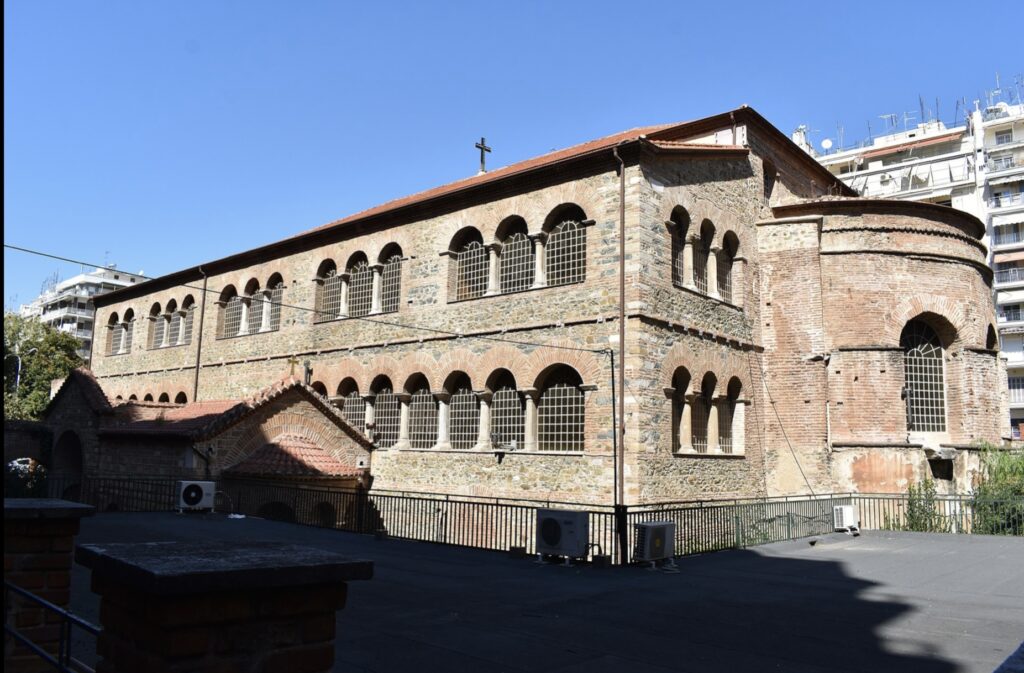
Here’s a two-day itinerary for your visit to Thessaloniki, including luxurious accommodations in the city center and opportunities to explore the local food scene:
Day 1: Exploring Historical and Cultural Sites
Morning:
- Check-in at The Excelsior Hotel: This luxury boutique hotel is located in the heart of Thessaloniki, offering elegant rooms, modern amenities, and a unique blend of classic and contemporary design. It’s the perfect base for exploring the city.
- Breakfast at Estrella: Start your day with a visit to this popular café known for its “bougatsan,” a croissant filled with custard cream, combining the traditional bougatsa pastry with a modern twist.
- Visit the White Tower: Begin your exploration with Thessaloniki’s most iconic landmark. Climb to the top for panoramic views of the city and the Thermaic Gulf.
- Explore the Archaeological Museum of Thessaloniki: Just a short walk from the White Tower, this museum houses impressive collections of ancient artifacts from the region, providing insight into the city’s rich history.
Lunch:
- Lunch at Ouzeri Aristotelous: Located near Aristotelous Square, this traditional taverna offers a variety of mezes (small dishes) and fresh seafood. Try local specialties like grilled octopus, dolmades (stuffed grape leaves), and a selection of ouzo.
Afternoon:
- Visit the Rotunda and Arch of Galerius: Explore these Roman-era monuments, both within walking distance from the city center. The Rotunda’s impressive mosaics and the detailed reliefs on the Arch are highlights.
- Stroll through Ano Poli (Upper Town): Take a leisurely walk through Thessaloniki’s old town, known for its traditional Macedonian houses, Byzantine walls, and the Trigonion Tower. The views from here are spectacular.
Evening:
- Dinner at Mavri Thalassa: End your day with a luxurious seafood dinner at this upscale restaurant. Located near the waterfront, Mavri Thalassa offers a refined dining experience with dishes like grilled fish, seafood pasta, and a great selection of Greek wines.
Day 2: Byzantine Heritage and Modern Thessaloniki
Morning:
- Breakfast at The Excelsior Hotel: Enjoy a leisurely breakfast at the hotel’s rooftop terrace, with views of the city as you start your day.
- Visit the Church of Saint Demetrios: Explore the city’s largest and most important church, dedicated to its patron saint. Don’t miss the crypt, which houses relics and artifacts.
- Tour the Museum of Byzantine Culture: This museum offers a deep dive into Thessaloniki’s Byzantine past, with exhibitions on art, religion, and daily life during the Byzantine Empire.
Lunch:
- Lunch at Ta Tria Gourounakia: A charming taverna located in the Ladadika district, known for its hearty portions and traditional Greek dishes. Try dishes like moussaka, souvlaki, and tzatziki.
Afternoon:
- Explore the Jewish Museum of Thessaloniki: Learn about the city’s once-thriving Jewish community and its impact on Thessaloniki’s cultural fabric.
- Walk along Nea Paralia (New Waterfront): Enjoy a relaxing afternoon walk along the city’s modern waterfront promenade. The area is beautifully landscaped, with plenty of cafés and spots to sit and enjoy the sea breeze.
Evening:
- Dinner at Sebriko: Located near the Vardaris area, Sebriko offers a modern take on traditional Greek cuisine. The menu features creative dishes using local ingredients, accompanied by a great selection of Greek wines.
- Nightcap at La Doze Bar: Finish your evening with a cocktail at this trendy bar in the city center. La Doze is known for its inventive drinks and lively atmosphere.
Accommodation:
- The Excelsior Hotel: Continue to enjoy the comfort and luxury of The Excelsior, which offers personalized service, stylish décor, and a central location perfect for exploring Thessaloniki.
This itinerary offers a blend of Thessaloniki’s rich history, vibrant food scene, and luxurious accommodations, ensuring a memorable and fulfilling visit.
